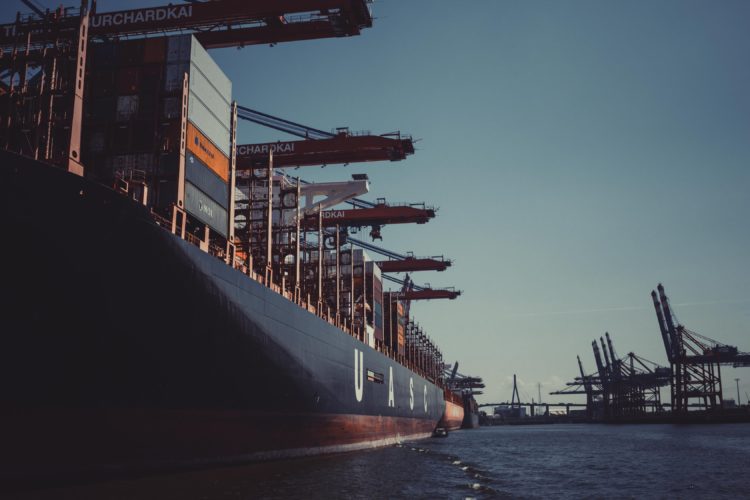Over the past few decades, ASEAN – the fast‑expanding trade bloc in Asia – has established its place as a key player in the global supply chain, thanks to low-cost operations and rapidly growing manufacturing hubs for automobiles and electronics. As with the rest of the world, the pandemic has managed to derail advancements made in Supply Chain Management (SCM).
As the region grapples with multiple waves and consequent lockdowns, it is witnessing a looming supply chain crisis. Rising infections, especially in countries like Thailand and Vietnam led to a critical shortage of migrant workers, which in turn, impacted labour-intensive manufacturing industries such as textiles and telecommunications. Compounded with a lack of skills and consistency in information flow, this crisis is the headwind to businesses in ASEAN.
As a result, SCM retains its place as a top business priority for 77% of CIOs and CTOs in the region, according to the 2021 CIO Study by the IBM Institute for Business Value. This has boosted the fast market growth for SCM in Asia-Pacific by 8.4% (whereas the overall average market growth rate is 6.6%) when the global SCM market is projected to stand at $15.4 billion by 2025.
As companies swiftly adopt digital transformation strategies to tackle the supply chain crisis head-on, they still have a long way to go in terms of leveraging its full potential. Supply chain leaders and CIOs in the region have their tasks cut out for them: delivering quality products and services to customers while transforming and diversifying supply chains to reach market potential.
To better adapt to unprecedented conditions and future-proof their businesses, organizations will need to build resilient supply chains that will allow them to be operationally nimble. A giant leap in this direction is ensuring all the data trapped in legacy systems is highly actionable, to facilitate informed decision-making in matters of purchase, inventory, and logistics. This also means keeping a keen eye on always keeping growing volumes of data secure and reliable.
As a company that has spent decades working with customers to digitize their global supply chains operations, the pandemic amplified the need for companies to seek the right tools that help them make faster and more informed decisions across their entire IT infrastructure. Here’s what we’ve learned from helping CIOs fix gaps in their supply chains:
First, don’t pretend it’ll get better by itself.
Even if your supply chains are up in order and you’re already implementing the right demand forecasting solutions, every tech leader still needs to become a student of their supply chain and take notes. That means getting to know who your freight border and shipping representatives are, representing all agents and components of the supply chain.
Clear communication, not just technology that helps you communicate better, is key to getting commercial teams and partners to prioritize and assess their supply chains and their products. And when it comes to communicating, be straight with your business leaders and in turn, that will help them better communicate and work with their customers.
In addition, take stock of your existing talent and resources and determine any potential gaps. Traditionally, the CIO oversees the technological needs and IT decisions for the organization, but these functional siloes can slow down the digitalization of the supply chain.
Second, assess your technology portfolio and build your product roadmap.
To understand your desired future state, first assess your current state. Examine how robust networks, artificial intelligence (AI), and edge computing capabilities can help you understand exactly what the pain point in your environment is and how to immediately be able to connect with customers before they become former customers.
These functions include accessing and scaling troves of unstructured on-premises data across a scattered network, then automating data processes through AI-driven critical risk models that can identify vulnerabilities and mitigate structural risks in real-time.
Keep in mind that storing data across multiple IT estates and moving it between partners and third parties can leave companies more vulnerable to cyber security risks and data breaches. Assessing infrastructure solutions that support the ability to protect data even when it leaves your platform is crucial.
Third, identify, invest, and capitalize on the right digital strategy at the right time.
For supply chain networks, this long-overdue infrastructure overhaul has been the source of bottlenecks that brought us to where we are today.
Although shifts in consumer shopping behaviours have created volatile and unpredictable demand, we live in a “new normal” of global epidemics, natural disasters, and infrastructure deterioration.
Prioritize your needs. Just as your company can’t get everything it wants shipped today, you also can’t implement all the IT changes you need to make immediately either. Increasing operational efficiency is a matter of skills investment, as well as bringing in advanced technologies.
Whether the world’s supply chain “normalizes” in a post-COVID economy, it may take far longer than most businesses or consumers’ desire. We anticipate an even greater demand for transparent, efficient and resilient supply chain capabilities across consulting, technology and services, leading to a wealth of acquisitions and partnerships in the coming year. If your organization is lagging, the time to accelerate your IT transformation journey and improve your logistics and supply chain is now.
To speed up the process, finding the right technology and infrastructure services partner is the answer to complex and compounding supply chain disruptors for many retailers today.
The partnership between talent and technology will be fundamental to bridging these gaps because it performs many of the critical functions underpinning a truly robust, reliable, and connected supply chain in 2022.





